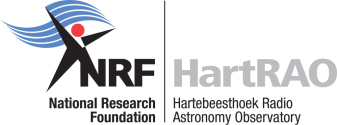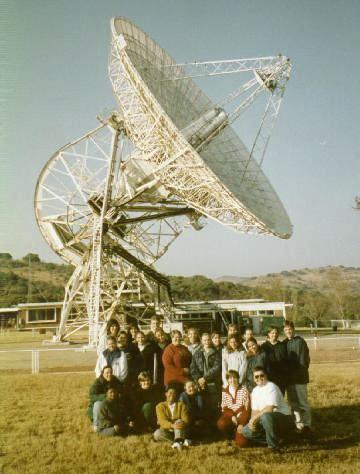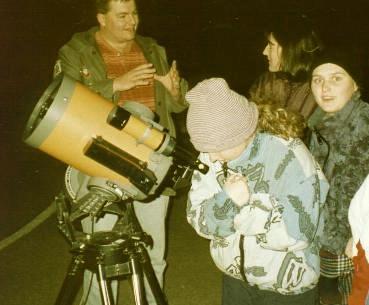
HartRAO Home >
Visiting the Hartebeesthoek Radio Astronomy Observatory
Public Visits ONLY will be held at the the Hartebeesthoek site
of the South Africa Radio Astronomy Observatory (SARAO) until further
notice
Visiting the Hartebeesthoek Radio Astronomy
Observatory
Maybe you have wondered*
- What are those twinkly things in the night sky?
- Why does the Moon sometimes seem shaped like a banana?
- Why does the Sun feel hot but the Moon doesn't?
- How far are the stars?
- What does a radio telescope "see"?
- What was the Big Bang and why can radio telescopes see its last glow?
Why not visit us and ask the questions to which you would
like answers!
Here's how:
School and Group Visits to HartRAO
there will be no School and/or Group Visits to HartRAO until
further notice
Not only is astronomy fascinating in its own right, but we demonstrate
connections to basic science and technology, and explain astronomical
concepts that appear in the school syllabus. Visits to the Hartebeesthoek
Radio Astronomy Observatory are a hands-on and minds-on, fun learning
experience.
Note that all visits must be booked in advance.
Public Visits at HartRAO
We hold public visits on Friday evenings once per month. These
are guided tours which run from 17h00 to 20h00. Booking in advance is
essential as numbers are strictly limited.
Educator Workshops on Astronomy
We welcome visits from educators and trainee educators from Colleges of
Education and Universities.
In addition, we hold educator workshops that are specifically designed to
assist educators in understanding and presenting astronomy- and
space-related topics using the methods of Outcomes Based Education. These
workshops are held at venues that are easy to get to for educators in
specific areas.
Where is HartRAO?
Need more Information?
For more information about visiting, phone 012 301-3100 or fax 012 301-3300
or e-mail the science awareness team at: visit@hartrao.ac.za
Picture Gallery
Click on the pictures to see larger versions.
 |
 |
Geography students from the
Johannesburg College of Education |
JCE students observe the double star Alpha Centauri |
 |
 |
Action and reaction -
a successful air/water rocket launch |
Are those spots on the Sun or dust on the lens?
Demonstration at a science fair in Johannesburg |
We are members of SAASTEC, the Southern African
Association of Science and Technology Centres.
*And here are answers to some of the questions that began this page:
Twinkly things in the night sky?
They are stars like the Sun; planets do not
twinkle unless close to the horizon.
Moon shaped like a banana? The Sun always lights up half of the Moon.
How much of that half we can see depends on where the Moon is in its orbit
around the Earth.
Sun hot, moon not? The temperature of the Sun's surface is nearly 6000
degrees, more than twenty times hotter than the Moon.
How far are the stars?
What does a radio telescope "see"?
What was the Big Bang and
why can radio telescopes can see its last glow?






